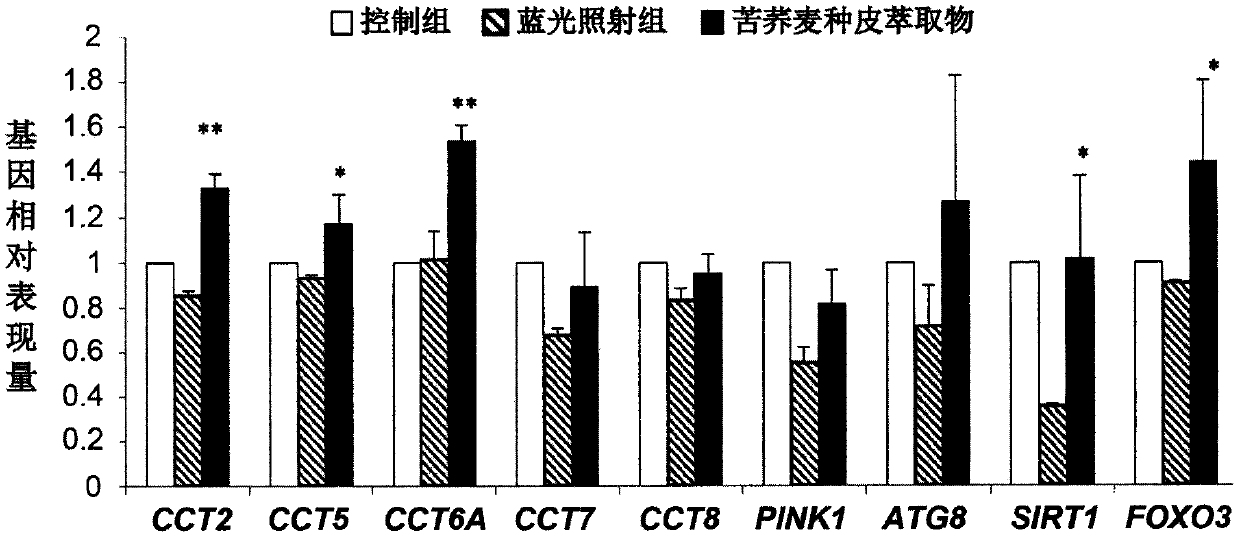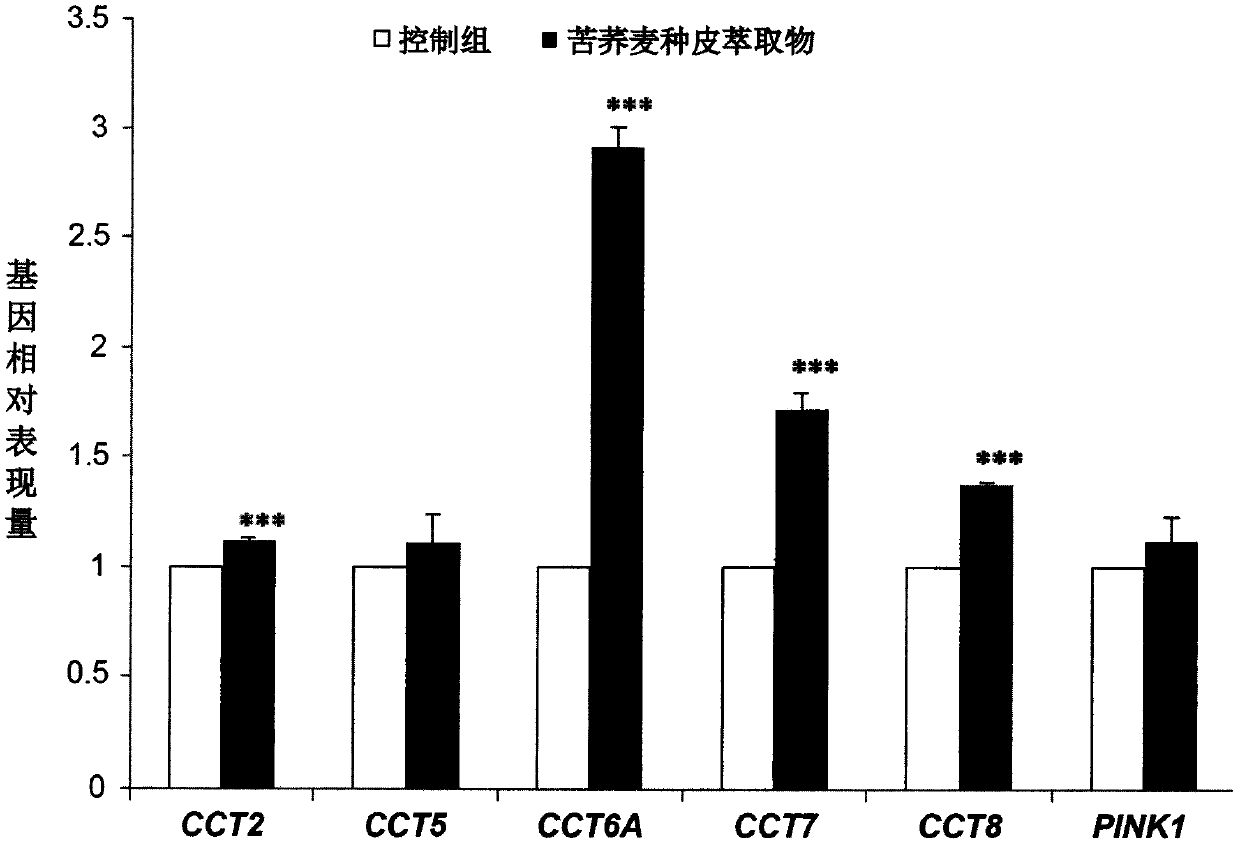Applications of tartary buckwheat seed coat extract in mitochondrion activity improvement, anti-aging gene expression enhancement, and protein saccharification inhibition
A technology of tartary buckwheat and extract, which is applied in the direction of anti-toxic agent, food science, drug combination, etc., and can solve the problem that the exact efficacy has yet to be further confirmed.
- Summary
- Abstract
- Description
- Claims
- Application Information
AI Technical Summary
Problems solved by technology
Method used
Image
Examples
Embodiment 1
[0038] Preparation of Tartary Buckwheat Seed Coat Extract
Embodiment 2
[0042] Tartary buckwheat seed coat extract enhances mitochondrial activity
[0043] Mitochondria are organelles that supply energy to cells, and their normal operation is essential for maintaining cell viability and proliferation. In order to explore the effect of buckwheat seed coat extract on mitochondrial function, this example uses flow cytometry to evaluate the changes in mitochondrial activity of human umbilical vein endothelial cells (HUVEC) after treatment with tartary buckwheat seed coat extract . First, the HUVEC cells are divided into 1×10 5 Each cell / well was seeded in each well of a 6-well plate containing 2 mL of M200 cell culture medium, and cultured at 37°C for 24 hours. Thereafter, the cells were treated with 1 mL of M200 medium containing 0.25 mg / mL or 0.125 mg / mL tartary buckwheat seed coat extract (experimental group), or only M200 medium was used to treat the cells as a control group. Cells in each group were cultured at 37°C for 24 hours and then used for ...
Embodiment 3
[0046] Expression of anti-aging genes of Tartary Buckwheat Seed Coat Extract
[0047] 3.1 Retinal pigment epithelial cells
[0048] In order to explore the effect of tartary buckwheat seed coat extract on the expression of anti-aging-related genes, qPCR was used to determine that human retinal pigment epithelial cells ARPE-19 were treated with tartary buckwheat seed coat extract, and its associated protein T complex (CCT) subunit, phosphoric acid Enzyme and tensin homologue inducible kinase 1 (PINK1), autophagy-related protein 8 (autophagy-related protein 8, ATG8), silencing information regulator 2 homologous protein 1 (SIRT1) and forkhead box protein O3 (FOXO3) Changes in genetic performance. In short, divide the cells into 1×10 5 Each cell / well was seeded in each well of a 6-well plate containing 2 mL of cell culture medium, and after culturing at 37°C for 24 hours, the cell culture medium was removed and the cells were washed with PBS solution. Thereafter, the cells were treat...
PUM
 Login to View More
Login to View More Abstract
Description
Claims
Application Information
 Login to View More
Login to View More - R&D Engineer
- R&D Manager
- IP Professional
- Industry Leading Data Capabilities
- Powerful AI technology
- Patent DNA Extraction
Browse by: Latest US Patents, China's latest patents, Technical Efficacy Thesaurus, Application Domain, Technology Topic, Popular Technical Reports.
© 2024 PatSnap. All rights reserved.Legal|Privacy policy|Modern Slavery Act Transparency Statement|Sitemap|About US| Contact US: help@patsnap.com










